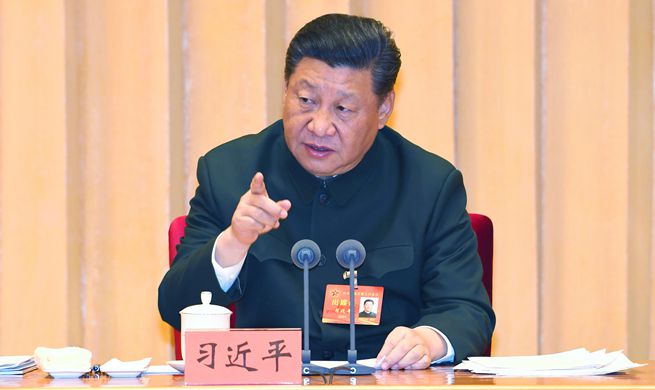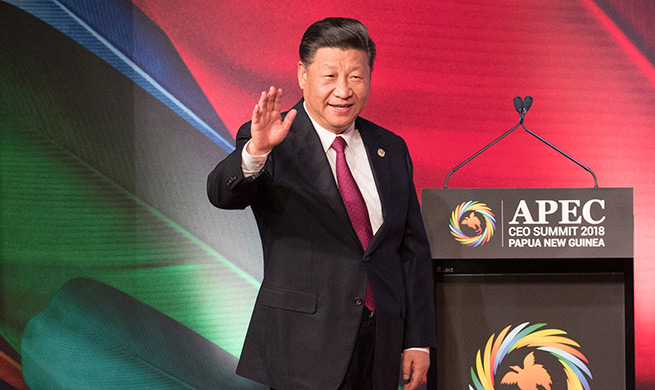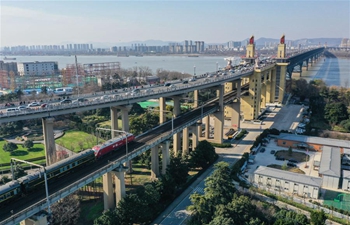CHONGQING, Jan. 6 (Xinhua) -- Having diligently performed his duty as a primary-level official during the massive relocation for the Three Gorges Dam, Ran Shaozhi was honored as a Reform Pioneer by the central government last month when China commemorated its 40 years of reform and opening-up.
Around 1.4 million people have been relocated between 1993 and 2010 to make way for the Three Gorges Dam, the world's largest hydropower project on the Yangtze River.
Ran, former Party chief of Anping Township of Fengjie county, southwest China's Chongqing Municipality, was in charge of the relocation of Santuo Village, the first village that was relocated for the construction of the mega project.
It was hard to persuade 1,100 villagers living on the riverside mountains to move away from their homes. Ran, suffering from severe arthritis, visited every household to communicate with them within half a year, often trekking along harsh mountainous roads.
He said at the beginning, the villagers were very opposed to the relocation plan, and some even cursed him because they found that their homes would be submerged forever once the construction of the Three Gorges Dam began.
Chinese farmers value their tradition of staying on their homeland. People feel settled and safe when they are entitled to the property of land, and they hope to be buried on the land where their ancestors lived. Young villagers worried more about how they would make a living after moving to a new town.
Ran proposed to renovate the hilly wasteland above the submerge line into arable land so that all the villagers could move to an area just three kilometers away from their original homes.
"Relocation can only be successful if we can help the immigrants find jobs and make money," said Ran, who came up with ideas of developing the naval orange industry and transportation business with the newly opened roads.
Meanwhile, Ran set up a strict supervision system to ensure no corruption occurs with the use of the 30 million yuan (about 4.4 million U.S. dollars) immigration fund for Anping township.
Each appropriation of funds needs five signatures, including the project contractor, immigration official, accountant and head of the township government.
"I openly addressed that anyone who was related to me could not contract any projects," Ran said.
Ran's experience of developing local industries and fund supervision was learned in other regions where relocations were underway.
In 1996, all of the 1,100 people in Santuo Village bid farewell to their dilapidated houses and moved to their new homes with access to tap water, roads and cable television.
Yu Duxiang, 55, is thankful for the relocation, as she now lives a higher-quality life.
"We can make more than 100,000 yuan (14,580 U.S. dollars) with over 300 navel orange trees," she said, adding that her son is running a transportation business in the town.
The annual naval orange production capacity in Santuo Village reached 9,000 tons in 2018 with production value of over 45 million yuan.
In December, 100 Chinese people, including Ran, were awarded Reform Pioneer medals, as they are "the creators of the great wonder of reform and opening-up" and "the source of power" to drive the campaign that started 40 years ago.
Ran, 65, praised as "a pioneer in the exploration of Three Gorges immigrant resettlement," said the glory belongs to all his fellow villagers.
"Relocating more than a million people for a single project is a miracle. I was lucky to be part of it," he said.

















